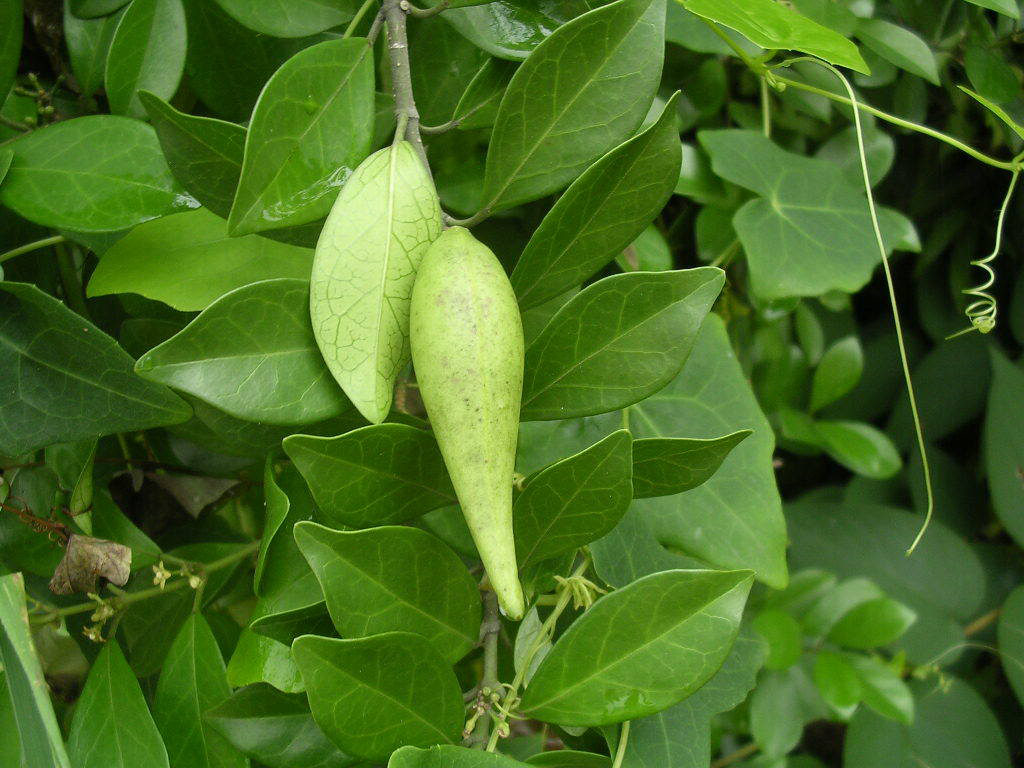Description
Botanical: Gymnema sylvestre
Other common names: Gurmar, Gudmar, Merasingi, Periploca of the Woods, Small Indian Ipecacuana, Small Indian Ipecac, Ram's Horn, Mardashingi, Gurbarbooti
The Hindu name for Gymnema is Gurmar, and it means "Sugar Destroyer." That tells you almost all you'll need to know about this herb. For two thousand years it has been used to reduce excessively high blood sugar levels, apparently by boosting the amount of insulin available to process sugar. It also is thought to exhibit serum cholesterol lowering activity, and renewed interest in its research may prove Gymnema to be one of the most important supports for diabetes.
Country of Origin: India
Beneficial Uses:
Gymnema is said to help reduce blood sugar levels in Type-2, adult onset diabetics by blocking sugar's efficacy in the system and reducing blood sugar levels after sugar consumption. Although it is not exactly clear as to how this herb works, substances in Gymnema's leaves, called gymnemic acids, are believed to increase the flow of insulin in the pancreas (boosting the amount available to process sugar), or possibly regenerate the cells in the pancreas that secrete insulin. This theory may have been validated in a 2009 study conducted by King's College, London, when they discovered that an extract from the plant may help regulate blood glucose levels through a direct effect on the pancreatic beta cells to “significantly” stimulate insulin release without compromising pancreatic beta cell viability. Other research has claimed that Gymnema reduces glucose absorption from the intestine, improves uptake of glucose into cells and prevents adrenal hormones from stimulating the liver to produce glucose, thereby reducing blood-sugar levels. It is interesting to note that the active ingredient, gymnemic acid, is an organic acid, atomically composed similarly to glucose molecules. The molecules fill the receptor sites in the intestines when gymnemic acid fills the receptors on the outer layers of the intestines, thus helping to block the absorption of sugar molecules.
Gymnema also blocks the taste of sugar on the tongue. The similar molecular structure of gymnemic acid and glucose has the same effect of filling receptor sites on the taste buds for several hours. The effect of suppressing the desire for sweets seems to further support both its use in lowering blood sugar levels, as well as its use for weight control.
With regard to weight management, there are claims that Gymnema may play a part in weight control. Because the Gymnema molecule blocks the passages through which sugar is normally absorbed, fewer calories are assimilated. Both sugar and Gymnema are digested in the small intestine, but the larger molecule of Gymnema cannot be fully absorbed, and the remaining sugar is eliminated as waste. It is thought that up to fifty percent of dietary sugar calories absorbed may be blocked with the use of this herb.
Contraindications:
People with (Type-1 or Type-2 diabetes) should use Gymnema Herbal Supplement only under the supervision of a physician. It is important to note that Gymnema should never be used in place of insulin. Gymnema can enhance the blood glucose lowering effects of insulin and hypoglycemic drugs and, thus, blood glucose levels. Therefore, blood glucose levels must always be monitored closely by a health care provider.


